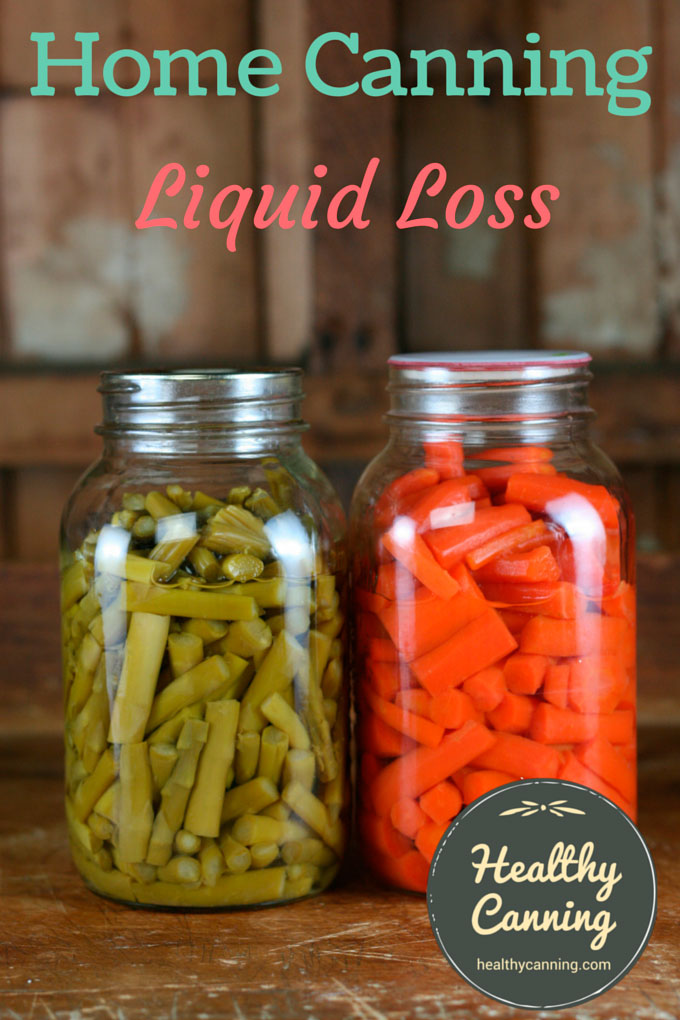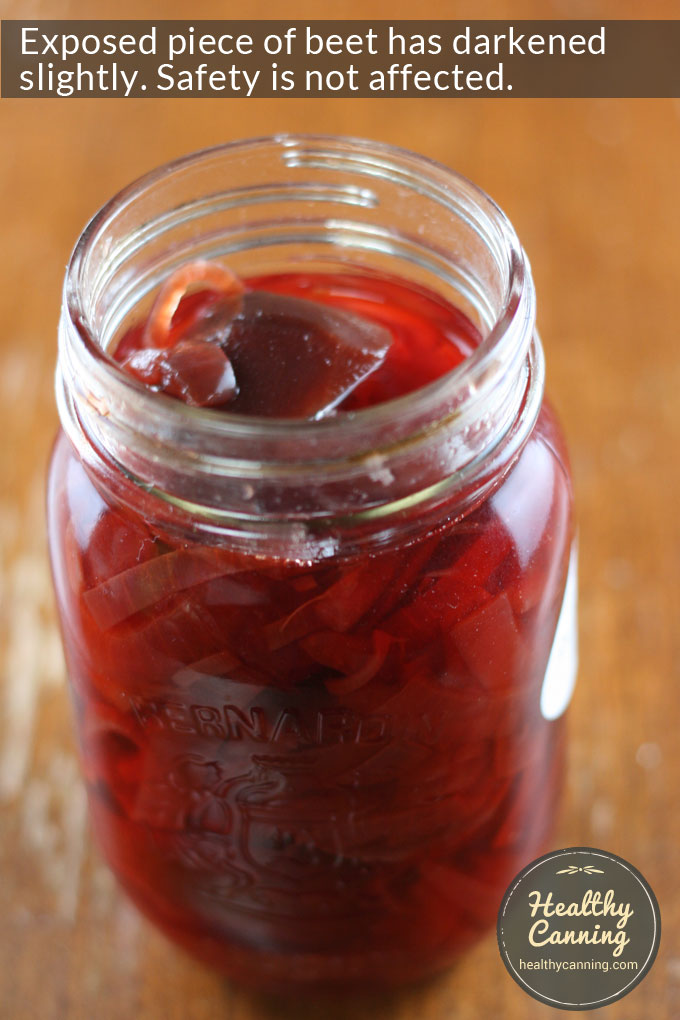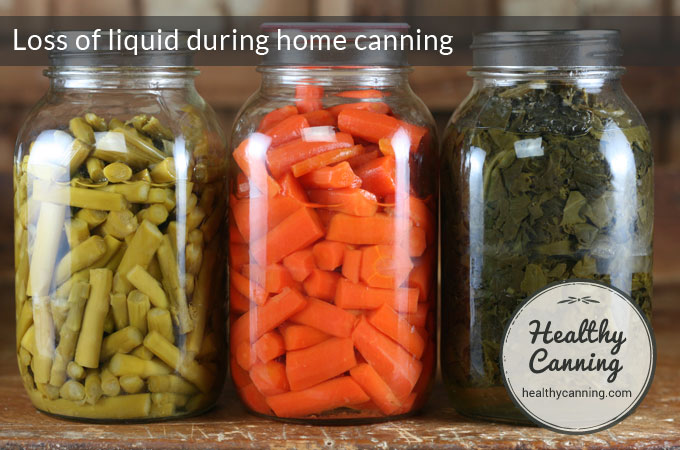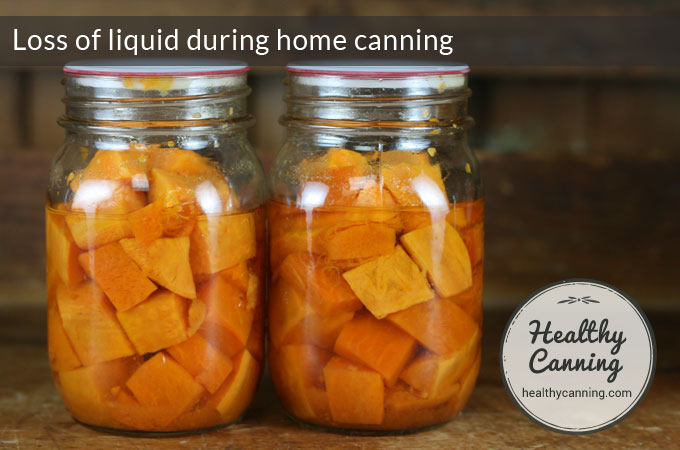1kg of Beef Dripping Whatis Its Liquid Volume

Jars will often lose or appear to lose some liquid during processing, especially during pressure canning. It seems to rarely happen during water-bathing.
This is not a safety concern, but it will shorten the shelf-life of those canned goods.
- 1 The produce is still safe
- 2 What causes loss of liquid during home canning?
- 2.1 1. Siphoning
- 2.1.1 Fluctuating Pressure
- 2.2 2. Improper cool-down procedure
- 2.3 3. Hidden air in the jar making itself known and rising to the top of the jar
- 2.4 4. Lid related causes
- 2.5 5. Water-bath canning issues
- 2.1 1. Siphoning
- 3 Miscellaneous
- 4 Further Reading
The produce is still safe
Here the the basic guidelines from the National Center for Home Food Preservation about how to react to this:
If liquid has been lost from jars, but the jars have sealed, do not reopen them to replace it. Use those jars first or food may become discolored. If more than half of the liquid in the jars has been lost, the food may not be adequately processed. In this situation, break the seal on the lid, refrigerate the jar and use it within 2 to 3 days." [1] National Center for Home Food Preservation Self-Study course. Module 2. "General Canning: Post-processing Checks"
Loss of liquid from a jar of home canned goods means excess headspace, and consequently, in more pronounced cases, it can prevent a seal from occurring. However, jars usually do seal even if your headspace has increased owing to liquid loss.
Loss of liquid will shorten the quality lifespan of a jar a bit, because the food above the water line may discolour a bit over time. But, it's not the end of the world, just annoying and embarrassing, if you had wanted to show the jars off. It will make the jar less photogenic, and shorten the cosmetic life of the food that is above the liquid line, but otherwise you are fine safety-wise. The safety of the food that discoloured is not impacted.

Severe liquid loss — when the water level has gone to less than half — is a potential safety problem, however. In that case, the jar may have had density issues, with not enough water to allow the heat to circulate evenly. So break the seal of the jar (if it sealed), and refrigerate and use soon (or drain, freeze, if appropriate.)
The NCHFP further assures us,
If all other processing variables are accurate, less than half of the liquid is lost from the jar and the jar seals, then the product is still safe for shelf storage. Product that is not covered by the liquid will darken. Use these jars first. If more than half of the liquid is lost, heat penetration may not be adequate. When these jars are removed from the canner and cooled, the seal should be broken, and the jars refrigerated for use within 2 to 3 days." [2] National Center for Home Food Preservation Self Study Course. Module 4. Canning Low Acid Foods: Problems in Pressure Processing. Accessed March 2015.
Whatever you do, don't open the jars to add water back in, then put the lids back on and the jars on the shelf: "If liquid boiled out of jars during processing, do not open jars to add more liquid." [3] Fraser, Angela. Associate Professor/Food Safety Education Specialist. How Canning Preserves Food. Clemson University, Clemson, SC. Accessed March 2015 http://www.foodsafetysite.com/consumers/resources/canning.html. . [/ref]
Ball says, "You may notice a slight decrease in the food and / or liquid levels. This happens as food shrinks from heat processing. It may also result from a siphoning of the liquid during processing. Should you notice a change, do not open the jars to add product or liquid. The sealed jars should be stored as is." [4] Ball Blue Book Guide to Preserving. Daleville, Indiana: Hearthmark LLC. Edition 36. 2013. Page 12.

What causes loss of liquid during home canning?
There are several possible causes, experts say:
- Siphoning — liquid in the jar being forced out or drawn out;
- Improper cool-down procedure;
- Hidden air in the jar making itself known and rising to the top of the jar;
- Lid related;
- Water-bath canning issues.
#1 applies to pressure canning; #2 to #4 can apply to either pressure or water bath canning; #5 applies to water-bath canning.
1. Siphoning
Siphoning technically means liquid being drawn out, but in home canning circles the term seems to be often used as a catchphrase to include liquid being pushed out as well.
If you overfill jars and leave insufficient headspace, you can end up with excess headspace because food will expand during processing (even if it shrinks back afterwards) and if there is insufficient room, while doing so it will push water out to make room for its expansion.
Siphoning can also be caused by fluctuating pressure.
Fluctuating Pressure
Fluctuating pressure can cause liquid loss.
The National Center for Home Food Preservation teaches,"Changes in pressure during processing may result in a loss of liquid from jars." [5] National Center for Home Food Preservation Self Study Course. Module 4. Canning Low Acid Foods: Problems in Pressure Processing. Accessed March 2015.
Patti Griffith from the University of Wyoming Cooperative Extension writes,
When pressure is released too frequently or constantly, liquid is pulled from the jars inside. This is a common problem in jars canned in a weighted-gauge canner. If the jars stay sealed after they are cooled, the product inside is safe to use even though the liquid is down. Pulled liquid may keep some jars from sealing because the residue on the jar rim will prevent a complete seal." [6] Griffith, Patti. Making Canning Work for You. University of Wyoming Cooperative Extension Service. MP-119-12. Accessed March 2015 at https://www.wyomingextension.org/agpubs/pubs/MP119_12.pdf
Note that she warns specifically against having the pressure so high on a weighted-gauge canner that the device is always struggling to release the excess pressure. Presto, a manufacturer of pressure canners, also says liquid loss can be owing to this: "Pressure regulator on the weighted gauge canner rocked vigorously during processing. Always maintain a slow, steady rocking motion." [7] Presto Frequently Asked Questions. Accessed March 2015 at https://www.gopresto.com/recipes/canning/faq.php#12
Lowering the pressure too quickly after processing can cause siphoning. Wait until the pressure is at absolute 0 before removing the counter-weight or petcock. Presto says that even "bumping the pressure regulator before pressure has completely dropped" can cause siphoning. [8] Presto Frequently Asked Questions. Accessed March 2015 at https://www.gopresto.com/recipes/canning/faq.php#12
2. Improper cool-down procedure
Cooling the jars too quickly after processing can cause liquid loss.
After a pressure canner has returned to absolutely zero, remove the weight and let the machine rest as is for 5 to 10 minutes (opinion varies whether it should be 5 or 10 minutes.) Then after removing lid, let the jars rest undisturbed for a final 10 minutes before removing.
Not allowing jars a bit of time like this to re-acclimate to the real world can cause liquid to escape from the jars.
For water bathing, after the processing time is up, turn off the heat, remove the cover and let the jars rest as they are in the water for 5 minutes before removing.
3. Hidden air in the jar making itself known and rising to the top of the jar
Raw food has a lot of air in it. The volume of food you have put in a jar before processing might actually only be ¾ food and ¼ air trapped inside the food. During processing, this air will escape from the food and rise to the top of the jar.
The Presto manual notes the following: "Failure to precook food before packing in jars thus allowing shrinkage to occur in the jar. It is especially important to preheat fruit." [9] https://www.gopresto.com/recipes/canning/faq.php#12. Note that the Presto people don't like cold packs, and in their manual don't even give you the cold-pack option for fruit as the NCHFP does; Presto gives only hot pack choice. Note as well that the Ball Blue Book [10] Ball Blue Book. Muncie, Indiana: Healthmark LLC / Jarden Home Brands. Edition 37. 2014. Page 12. and the Bernardin Guide [11] Bernardin Guide to Home Preserving. Toronto, Canada: Bernardin Ltd. 2013. Page 36 emphasize that the hot pack is always preferred, too.
Starchy foods such as beans can absorb water, making it seem as though it has disappeared. This is less of a problem if you use hot pack for these types of food, which is the generally the recommended pack type, anyway.
Here's a video discussion from a home canner about pack-type effect on apparent liquid loss:
Air is also often trapped between pieces of food as you pack the jars, and during processing it too will rise to the surface. Debubbling helps with this. [12] What can cause loss of liquid from jars during processing? In: Fresh Preserving & Canning Questions. Ball Corporation. Accessed March 2015 at https://www.freshpreserving.com/tools/faqs
- Re-using previously used canning lids;
- Not wiping the jar rims before putting the lids on (trapped particles of food on the rim could raise the lid, allowing water to escape);
- Canning ring bands were too loose, allowing too much venting : "If rings are too loose, liquid may escape from jars during processing, and seals may fail." [13] United States Department of Agriculture (USDA). Complete guide to home canning. Agriculture information bulletin No. 539. 2015. Page 1-16
5. Water-bath canning issues
In water-bath canning, liquid loss can occur if the jar lids are not covered with sufficient water during processing. Fruits packed in syrup or water are especially prone to this.
Miscellaneous
And, it seems, there is one more reason not listed in the above reasons from the experts, which is: phase of the moon! It can sometimes just occur when you will swear you have done everything right, forwards and backwards.
As long as the jar seals and you haven't lost more than half the liquid in the jar, you are good to go.
Further Reading
Elizabeth L. Andress. Ph.D. and Judy A. Harrison, Ph.D. General Canning Information: Causes and Possible Solutions for Problems with Canned Foods. National Center for Home Food Preservation.
Presto Frequently Asked Questions.

Source: https://www.healthycanning.com/loss-of-liquid-during-home-canning/
0 Response to "1kg of Beef Dripping Whatis Its Liquid Volume"
Post a Comment